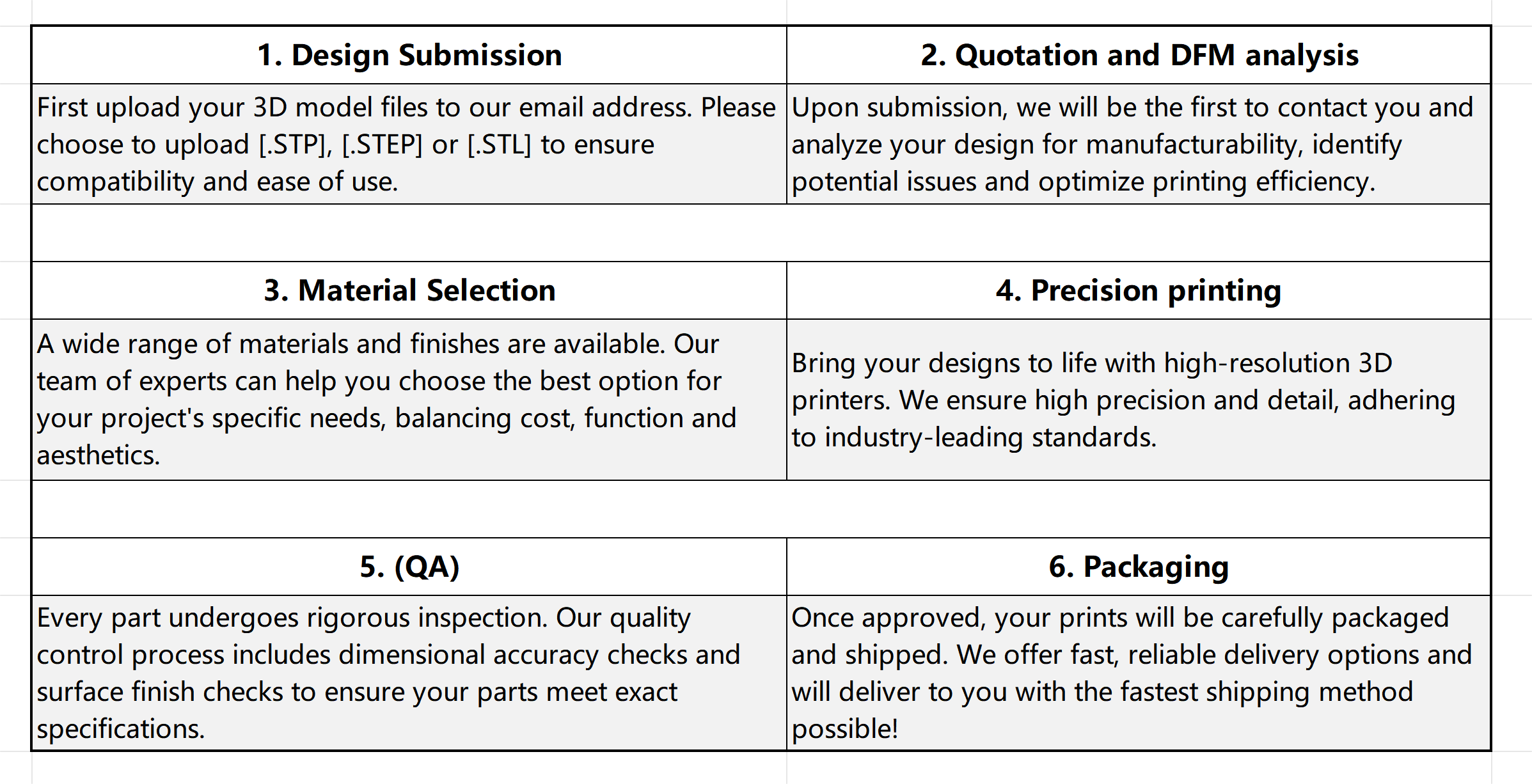3D Printed Metal Parts
OTHER configuration:
Dimensional accuracy: 0.1 mm
Surface roughness: 10 microns
Mechanical properties: high strength and wear resistance
Weight: lighter than implants produced by traditional manufacturing methods, helping to reduce the burden on patients
Producibility: complex 3D structures, which are difficult to achieve using traditional manufacturing methods, can be easily achieved with 3D printing technology
Product Description
product size chart or static pressure:

Product Specfications
Why choose us for custom 3D printing?
1. Unrivalled Quality
Get design feedback from our experienced engineering team that has helped thousands of customers bring their products to market with quality 3D printed parts. We will also work with you to determine the best part orientation for your application requirements.
2. Ask for a Quote
Our industry-leading tolerances and surface finish quality result from dedicated process engineering and quality teams for each 3D printing technology.
3. Wide range of material options
Across our six 3D printing technologies, we use a range of commercial-grade thermoset resins, thermoplastics, and metal powders to 3D print parts suitable for a variety of part applications and industries. If your part requires it, we can offer a variety of post-processing options such as heat treating, secondary operations, plating, painting, and colouring to further enhance mechanical properties and appearance.
4. Size and Production
Our facility has over 120 3D printers producing metal and plastic parts. This means that when you need parts quickly, whether it’s a small batch of parts or a production level batch, we always have the capacity.
Common 3D Printing Applications
Additive manufacturing can be leveraged for both rapid prototyping and production in aerospace, medical, automotive, and other large industry sectors. Examples of typical parts, include:
- · Form and fit prototypes
- · Housings and enclosures
- · Medical devices
- · Snap fits
- · Jigs and fixtures
- · Heat exchangers and heat sinks
- · Engine components
- · Fuel injectors
- · Surgical instrumentation
General Tolerances for 3D Printing
For linear dimensions that are printed without specified tolerances, our local 3D printing shops adhere to the GB 1804-2000 standard, applying and inspecting with a coarse accuracy level (Class C).
For shape and position dimensions not noted tolerance, we follow the GB 1804-2000 L level for implementation and testing. Refer to the following table:
|
|
Basic Size |
|
Linear Dimensions |
±0.2 to ±4 mm |
|
Fillet Radius and Chamfer Height Dimensions |
± 0.4 to ± 4 mm |
|
Angular Dimensions |
±1°30′ to ±10′ |
|
|
Basic Length |
|
Straightness and Flatness |
0.1 to 1.6 mm |
|
Verticality Tolerance |
0.5 to 2 mm |
|
The Degree of Symmetry |
0.6 to 2 mm |
|
Circular Runout Tolerance |
0.5 mm |





